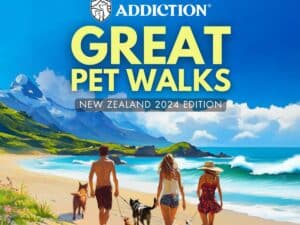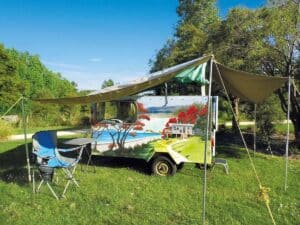Inflatable awnings are relatively new in New Zealand. We started to see the Vango brand making an appearance in campgrounds in about 2012, and by 2015 inflatable awnings from a number of suppliers had made their way to the country.
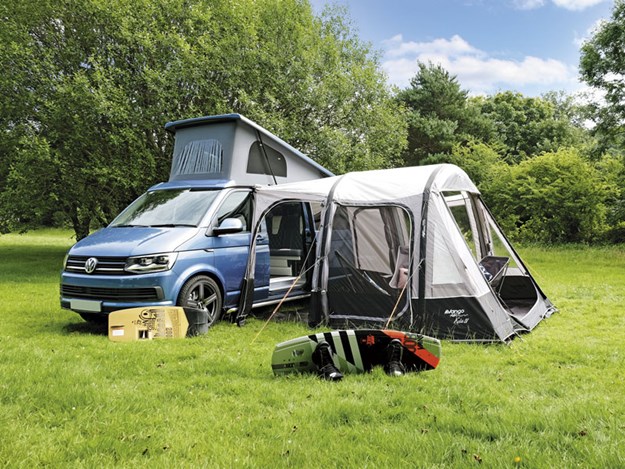
And they seem to be growing in popularity. One retailer said his store was now selling more inflatable awnings than those with steel frames. He also noted that in 2008, he’d rebuffed an offer for an inflatable awnings agency with the comment, “Don’t be silly, that’s ridiculous.” As it has turned out, the idea was not ridiculous.
At that stage, the boating industry was already using strong waterproof fabric to build high-performance Rigid Inflatable Boats (RIBs) capable of travelling at up to 70 knots. It was a relatively small step to adapt this technology to produce inflatable tubes and beams to replace steel awning poles.
Immediate benefits became apparent. These awnings are much faster to put up and take down, and by eliminating the steel poles, the awning package is lighter. With the steel poles gone, damage to your leisure vehicle in stormy conditions is much less likely. In reasonable weather, one person can put the awning up or take it down.
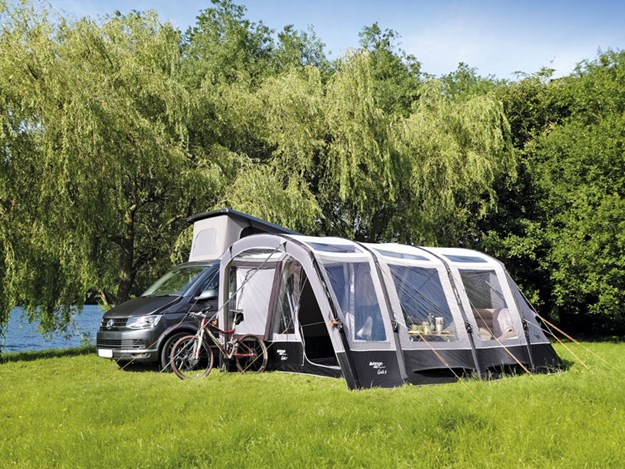 |
The Vango Kela free-standing awning with one extra ‘bay’ added |
On the downside, some inflatables have less detachable panels, so can be heavier and more awkward to feed into the awning rail on the RV. Strictly following the manufacturer’s erecting instructions usually mitigates this problem. Punctures spring to mind as a problem, but they are not common.
Leaks through inflation points and tubing are more likely and the operator’s guidebook that comes with the awning should provide the remedy. There are two schools of thought regarding the inflation method. Some, like Vango, keep it simple and opt for single inflation points for each tube/beam.
Others, like Kampa, prefer fully interconnected air-tube systems, with one inflation point for the whole system. This system can be quicker to erect but slower to dismantle and, being more complex, it can need more maintenance.
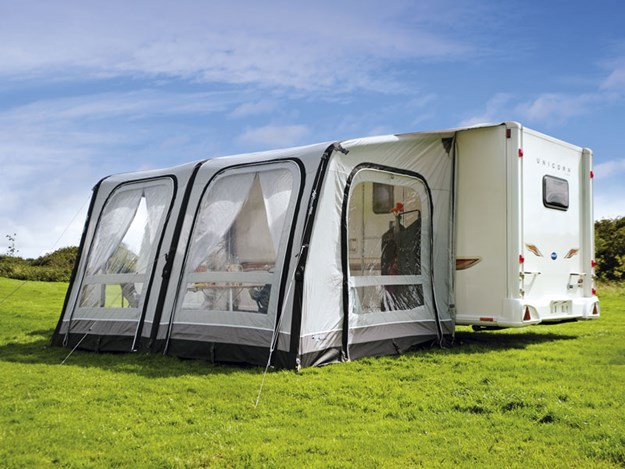 |
The Vango Varkala standard 2-bay awning attached to a caravan |
The tubes on most Vango awnings, for example, run at right angles to the RV wall, and the beams parallel with the wall. Each tube’s inflation point is at an easy-to-get-at height off the ground. Once the tubes are inflated, each separate inflated beam is pressed into place between them. Heavy-duty Velcro secures the beams, keeping the whole awning structure stable.
The edge of the awning that meets the side of the RV is a fabric-covered strip of foam plastic designed to make the join weather-tight. Most inflatable awnings are supplied with two steel poles to compress the seal and keep it in place. Zip-on annexes are available for most popular inflatable awnings.
Drive-away inflatable awnings that remain erect without any support from the vehicle are also easy to find. Awnings built for the British market and sold here should meet the British Standard for the use intended; Winter awnings (Type W), Residential awnings (Type R), Touring awning (Type T) and the Lightweight awning (Type L).
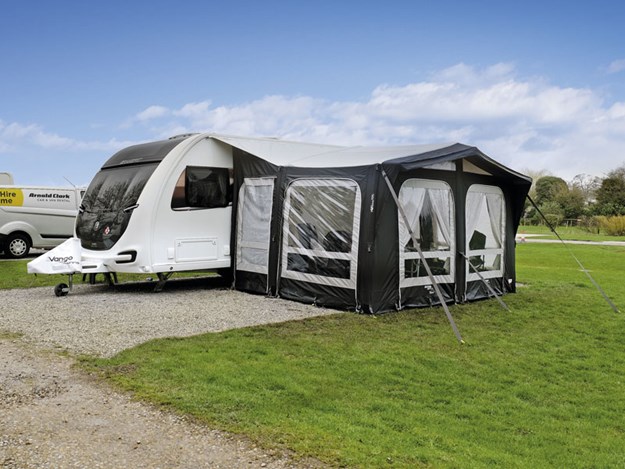 |
The Vango Vienna is another style of inflatable awning attached to a caravan |
Because of New Zealand’s powerful UV rays, inflatable awnings are not recommended for “seasonal pitching” in New Zealand, e.g. leaving up at a campground all summer. As with tents and regular awnings, the quality of the fabric is a major component in determining overall quality and price. If you’re in the market for a new awning, find a display of erected ones and see if you like the view from the inside out. After all, that is the view you’ll see most.


